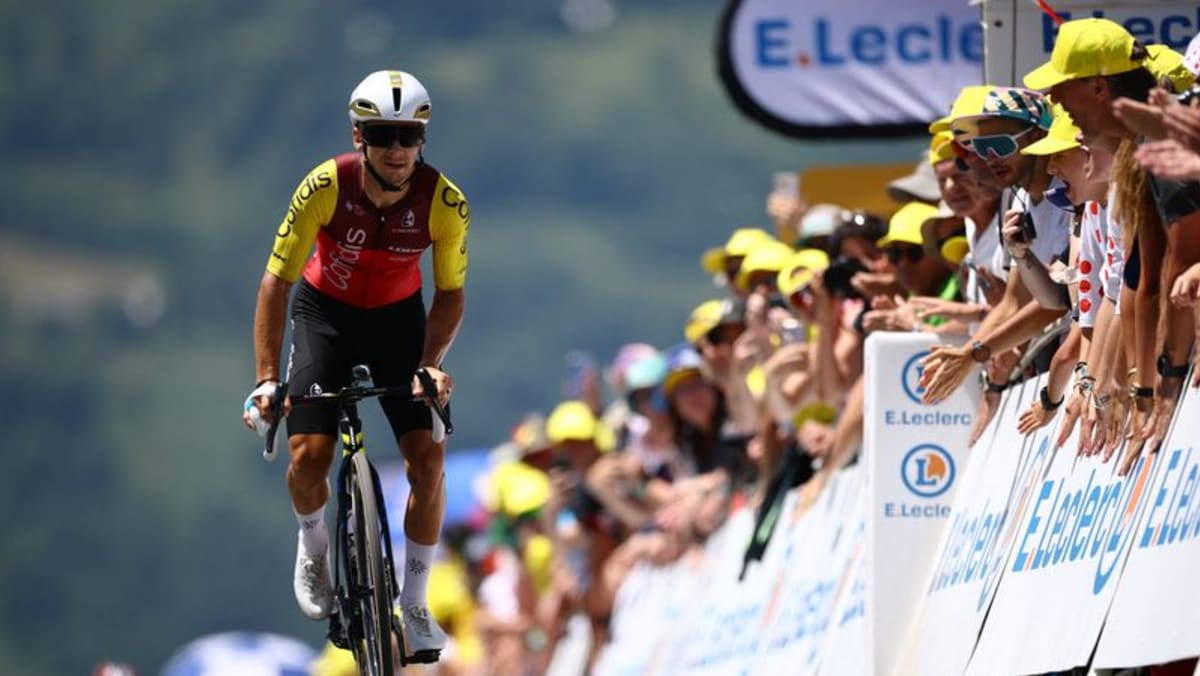LOUDENVIELLE, France :Rising temperatures and increasing speeds in the Tour de France have prompted sports directors to call for changes to feeding zone regulations, citing heightened risks of injury and dehydration for riders.
“We’re placing feed zones on flat, fast stretches where riders are doing 60 kph,” Philippe Mauduit, performance director at Groupama–FDJ, told Reuters on Friday before the start of the 13th stage.
“It’s so dangerous. A rider trying to grab a musette (feed bag) can break a finger or crash. And if he brakes too much, he’s dropped — and in that group speed, he’s not coming back.”
French rider Bryan Coquard broke a finger in Thursday’s 12th stage as he attempted to grab his feed bag and said he would abandon the race after Friday’s individual time trial.
The growing risk, particularly under extreme weather conditions, has prompted a reevaluation of race feeding protocols among teams and organisers.
“In 35°C heat, this isn’t a luxury. It’s vital,” Mauduit said. “Do we need to wait for someone to die on Mont Ventoux before we act?”
One key complaint is the placement of feed zones on long straightaways instead of safer, slower segments like slight uphills or post-town exits.
Mauduit cited several recent crashes and injuries directly linked to chaotic feeding zones.
“There have been a lot of broken collarbones and scaphoid fractures this season. We’re putting riders in no-win scenarios,” he said.
In response, a coalition of sports directors formed after the Criterium du Dauphine in June presented proposed reforms to the International Cycling Union (UCI), Tour organisers (ASO), and the AIGCP (international organisation of professional groups).
Among the changes already accepted is the reinstatement of feeding on categorised climbs.
“Thankfully, we can now feed at the foot of climbs,” Mauduit said. “The race jury and (Tour racing director) Thierry Gouvenou responded quickly. But it’s not enough.”
Tom Southam, sports director at EF Education–EasyPost, echoed many of these concerns while also acknowledging the complexity of the issue.
“The rules changed this year, and it’s no longer us who decide where feeds go,” Southam said. “Now you’ve got 23 teams vying for space in the same spot. That massively increases pressure. Even if we placed them ourselves, it wouldn’t be massively different on a flat 120-km day.”
While Southam credited organisers for doing the best they could, he also advocated for more input from experienced team personnel.
“They should involve a DS (sports director) who knows the terrain — you need parking for 23 teams, a slight uphill, and slower sections. Other races just call a local DS and say, ‘Can you help us?’ It works.”
The increasing heat across stages is another urgent concern. “The Tour is just getting hotter,” Southam noted. “We had 9 or 10 planned hand-up spots yesterday plus the cars, so we were fine. But it’s becoming a huge factor.
“If we keep racing in July, we need to start stages earlier — not 1 p.m. If the race finishes at 5:30 instead of 4:30 on TV, so be it. Something has to change.”
“We’re not asking for chaos,” Mauduit concluded. “Just smarter placement. If we want riders to give a show, let’s at least give them the means to do it — safely.”
The UCI said the new measures were taken after consultation with all the cycling stakeholders.
“The UCI’s initiatives concerning safety are implemented after consultation with SafeR, the structure dedicated to safety in women’s and men’s road cycling, bringing together representatives of all road cycling’s stakeholders: organisers…, teams…, riders… and the UCI,” the governing body told Reuters.
ASO was not available for comment.
